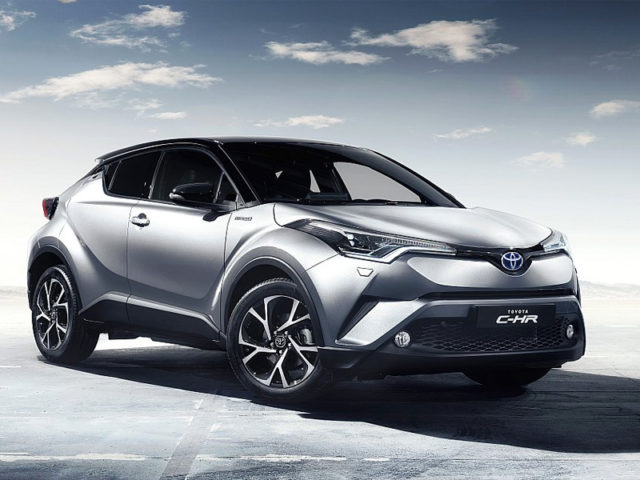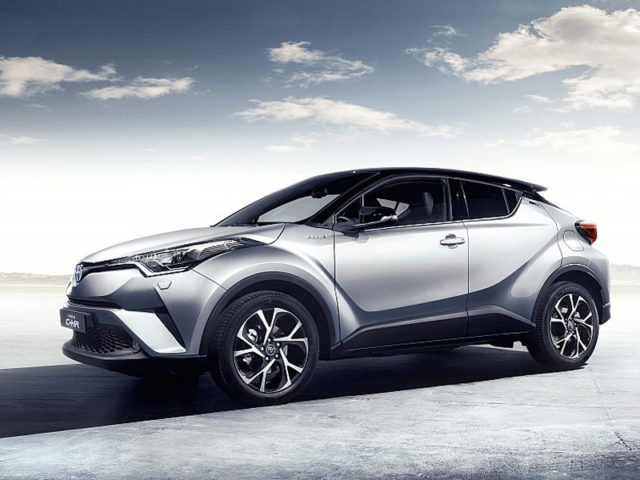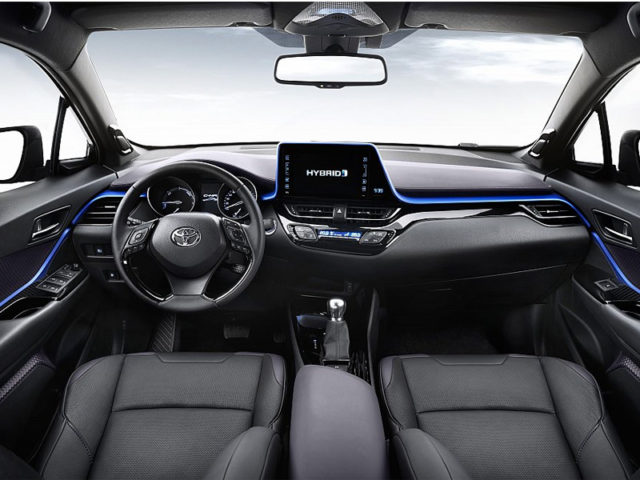First Drive: Toyota C-HR Hybrid
Few manufacturers can ignore the rapidly expanding C-SUV crossover segment, with sales growing every year. Unlike many competitors though, Toyota is first to join the sector with a petrol hybrid, boasting impressive fuel economy and emissions, said Dan Gilkes.
Toyota’s C-HR, which stands for Coupe High Riding, is certainly a distinctive car, with Lexus-like contours in a shape that combines a coupe roofline with chunky running gear. It’s the first Toyota outside Japan to be built on the Toyota New Global Architecture (TNGA) platform, boasting a 65% stiffer chassis with many components mounted lower in the frame, for improved road holding and a lower centre of gravity.
The car has McPherson strut front suspension with double wishbones at the rear, both tuned for European roads and on Spain’s smooth asphalt the C-HR certainly delivers on the promise of a refined ride. The car handles more like a hatchback than an SUV too, with a lower seat height than some competitors.
There are two drivelines o offer, a 1.2-litre turbocharged petrol or the hybrid, which uses a 1.8-litre petrol engine and a Nickel Metal Hydride battery pack that nestles below the rear seat. The 1.2T develops 114hp and 145Nm of torque, while the hybrid, which Toyota expects to grab up to 75% of sales, creates a combined 120hp with 142Nm of torque.
The hybrid offers a claimed combined fuel figure of up to 74.3mpg, with emissions of just 86g/km (both with 17” wheels). Opt for petrol power and those figures drop to 47.9mpg and 136g/km. While the petrol is on a par with similarly fuelled versions of rival crossovers like Nissan’s Juke and Vauxhall’s recently updated Mokka X, the hybrid more than cancels out the benefits of a diesel engine.
C-HR uses a new hybrid system, that, though marketed as a CVT (continuously variable transmission) is in fact a transaxle housing a single planetary gear set with two electric motor-generators. This allows the C-HR to move off in electric drive with initial acceleration boosted by torque from the electric motors when required.
Around town that results in smooth, quiet progress, with the car slipping seamlessly between electric and petrol/electric drive. Indeed only a graphic on the dash signifies which power system is in use. Move away from urban streets however and the familiar CVT drone is still present, despite the geared driveline.
When cruising though it’s a different story, with the car happy to keep pace with traffic. Once up to speed the battery will be charging and the engine barely consuming any fuel.
There are three trim levels on offer, all of which boast plenty of equipment. The entry Icon model has dual-zone air-con, 17” alloys and Toyota’s Touch 2 multimedia system. The mid-range Excel trim addspart leather upholstery, heated front seats, keyless entry, 18” alloys and a host of electronic driver aids.
The range-topping Dynamic trim gets LED headlights, privacy glass and metallic paint with a contrasting black roof.
Toyota is looking for residual values of around 45%, which should promote some highly competitive lease and purchasing costs. A five year/100,000 mile warranty is also part of the package. With that in mind the company expects around almost half of sales to be to fleet buyers.
Build at the company’s plant in Turkey, Toyota is hoping to sell up to 100,000 C-HRs a year in Europe, making it an important model in the line-up. Of that number it expects up to 75% to be the hybrid model, giving the C-HR a unique selling point that, for now at least, its competitors simply cannot match.
What we think
The 1.2T petrol engine makes a strong case for itself out of town. But for urban drivers and those looking for a crossover with emissions, this stylish hybrid fits the bill.

















